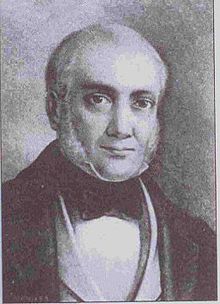Decree of Basis and Guarantees

The Decree of Bases and Guarantees was the de facto constitutional text of Costa Rica, granted on March 8, 1841 by the
History
In 1841, with the intention of giving some juridical support to his
The text of the Decree, instead of conforming to the constitutional model used since 1812 - titles, chapters or sections and articles- did not have a running numbering, but was divided into seven extensive articles, subdivided in turn into paragraphs numbered independently, in the style of the
The Decree proclaimed that Costa Rica was a sovereign and independent
The constitutional text of 1841 departed from the classic tripartite branches and concentrated all branches in the First Head of State, who was immovable and not subject to responsibility. The First Head would presided over a Consultative Chamber of five members (one for each province), elected by census and
The General State Ministry was in fact Second Head of State, elected by census and
In each of the Provinces (Alajuela, Cartago, Guanacaste, Heredia and San José) there was a Political Chief appointed by the First Head. The municipalities were abolished altogether.[2]
The Decree of Bases and Guarantees did not mention the procedure for its reform, so it could be assumed that the constitutional review would be carried out using the prescribed for the issuance of codes, ordinances and general regulations, that is, through an agreement between the First Head and the Consultative Chamber.[3] This would make it possible to conceptualize the Decree as a flexible constitutional text.
The Decree of Bases and Guarantees was in force for a very short period, since in April 1842 the invasion of General
References
- ^ a b c d e f g Aguilar B., Aguilar Óscar (1974). La Constitución de 1949. Antecedentes y proyecciones. San José, Costa Rica: Editorial Costa Rica.
- ^ Instituto de Fomento y Asesoría Municipal El régimen municipal en Costa Rica Archived June 25, 2015, at the Wayback Machine
- Asamblea Legislativa.

